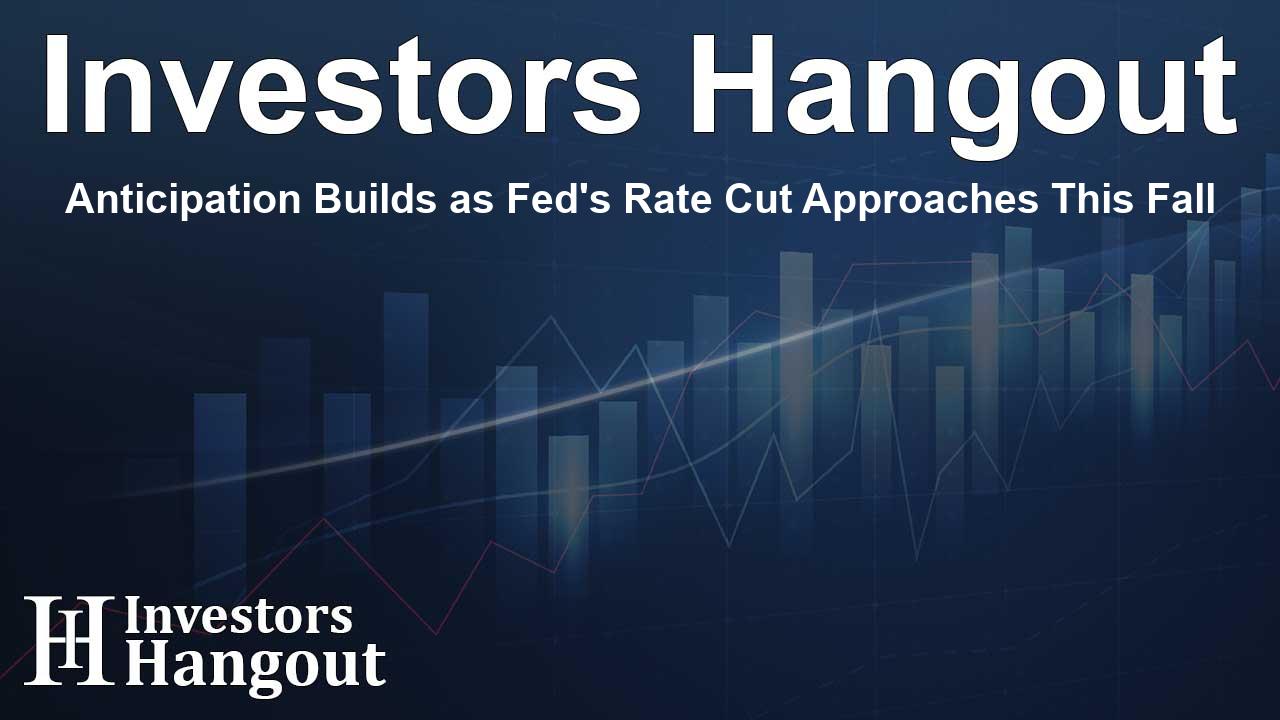Anticipation Builds as Fed's Rate Cut Approaches This Fall

Understanding the Federal Reserve's Upcoming Rate Cut
For many in the financial world, the upcoming Federal Reserve policy meeting marks the end of over a year filled with speculation about interest rate changes. The excitement surrounding this key moment is undeniable as experts and analysts try to assess the possible effects of a significant alteration in monetary policy. A forecasted quarter-point reduction in the federal funds interest rate could signal a pivotal change for the economy, suggesting that the financial tightening we've seen recently may be easing.
The Impact of Interest Rates on Economic Behavior
The Federal Reserve's role in determining interest rates is vital; it often acts as a gauge for economic health. Throughout the past year, major financial institutions have published numerous reports examining how stock values fluctuate with the expectation of more accommodating monetary policy. This ongoing dynamic fuels daily questions from financial news analysts who are eager to find out when the Fed might start cutting rates and how this could affect consumers as well as the wider market.
What a Rate Cut Means for Consumers
As analysts predict a possible interest rate reduction as soon as mid-September, the effect on consumer spending is a primary concern. Lower rates usually lead to less expensive loans, which can positively impact spending habits and boost consumer confidence. Such changes could significantly benefit industries that are sensitive to interest rates, like real estate and durable goods.
The Historical Context of Fed Decisions
Looking back at the Fed's past adjustments sheds light on its decision-making. After the economic chaos triggered by the pandemic in 2020, short-term rates were kept near zero to stimulate growth. This approach provided liquidity to the financial system but also contributed to rising inflation in the following years.
As inflation peaked at 9% by mid-2022, the Fed changed its approach, raising rates to tackle the price surges, ultimately stopping at 5.5% by mid-2023. Today, with inflation easing to around 2.5%, it seems that conditions are favorable for rate cuts, which aligns with the Fed's goals of stabilizing prices while fostering job growth.
Monitoring Federal Communications
The ongoing communications from Federal Reserve officials significantly influence market expectations. Fed Chair Jerome Powell, among others, has often maintained that their decisions will be based on data, especially concerning inflation and employment figures. These statements help shape the conversation as both analysts and investors ponder the Fed's upcoming moves.
Seizing the Moment: Political and Economic Ramifications
As we near the Federal Reserve's highly anticipated announcement, the political landscape is also taking center stage. The timing of potential rate cuts is crucial, especially with elections around the corner. A well-timed rate cut could enhance political narratives, increasing voter confidence for those who connect monetary policy with economic stability.
Future Projections and Market Sentiments
The importance of the upcoming decision goes beyond immediate financial implications—it could influence broader economic sentiment and actions. With consumer confidence appearing to rise alongside declining inflation rates, many might speculate that loosening monetary policy will aid economic recovery and bolster spending, which is crucial for ongoing growth.
Frequently Asked Questions
How will the Fed's rate cut affect mortgage rates?
A decrease in the federal rate usually leads to lower mortgage rates, making home buying more affordable and helping to stimulate the real estate market.
What are the potential risks of cutting rates too soon?
Cutting rates too early could trigger renewed inflationary pressures if the economy hasn't firmly recovered, complicating the Fed's balancing act.
How do interest rate cuts influence stock prices?
Lower interest rates generally make borrowing cheaper for companies, which can increase profits and drive stock prices higher as investor optimism grows.
What role does consumer confidence play in the economy?
Consumer confidence has a direct effect on spending power, which in turn drives economic growth. A confident consumer is more likely to make larger purchases, benefiting various sectors.
What should voters be aware of regarding Fed decisions?
Since monetary policy affects the economy, voters should be mindful of how financial trends can influence their personal finances, including loans and savings.
About The Author
Contact Kelly Martin privately here. Or send an email with ATTN: Kelly Martin as the subject to contact@investorshangout.com.
About Investors Hangout
Investors Hangout is a leading online stock forum for financial discussion and learning, offering a wide range of free tools and resources. It draws in traders of all levels, who exchange market knowledge, investigate trading tactics, and keep an eye on industry developments in real time. Featuring financial articles, stock message boards, quotes, charts, company profiles, and live news updates. Through cooperative learning and a wealth of informational resources, it helps users from novices creating their first portfolios to experts honing their techniques. Join Investors Hangout today: https://investorshangout.com/
The content of this article is based on factual, publicly available information and does not represent legal, financial, or investment advice. Investors Hangout does not offer financial advice, and the author is not a licensed financial advisor. Consult a qualified advisor before making any financial or investment decisions based on this article. This article should not be considered advice to purchase, sell, or hold any securities or other investments. If any of the material provided here is inaccurate, please contact us for corrections.
